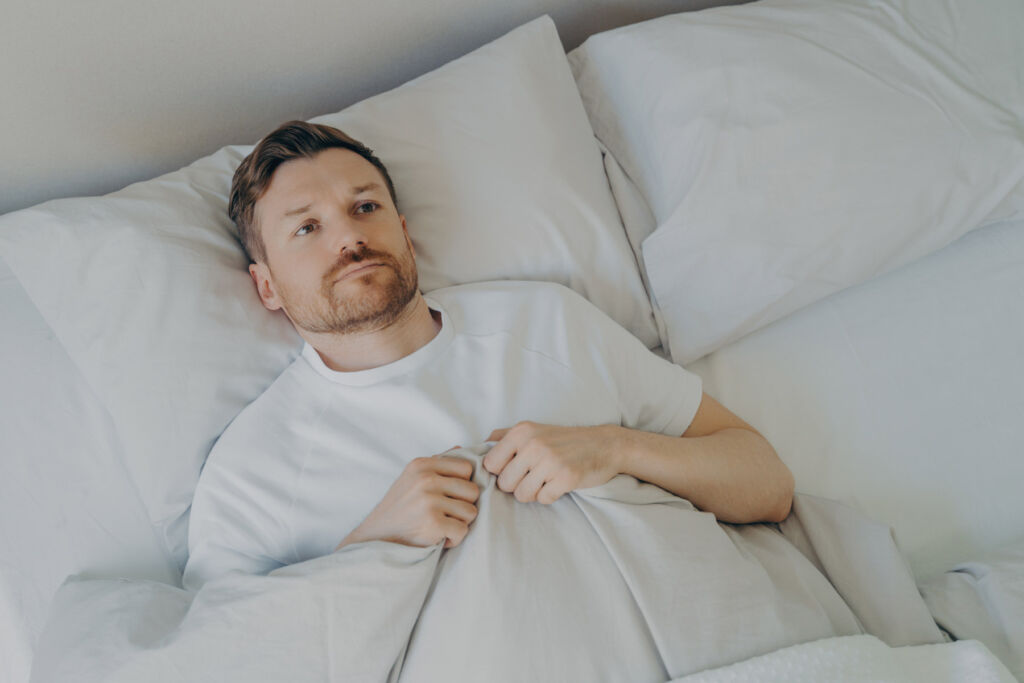
New research shows Google searches for ‘backache’ are up 8% in the last quarter, alongside an 8% increase in searches for ‘back pain’ in the past month. The data study from Bensons for Beds reveals Google searches for ‘best sleeping position’ are up almost 25% in the last year, and the TikTok hashtag #bestsleepingposition has over 7 million views overall as more people seek the answer to a comfortable sleep. But is there a correlation between the two increasing search terms?
Bensons for Beds discussed the best sleeping position for bad backs with Marco Antonetto, Physiotherapist from Nordic Balance, who said, “The best sleeping position for individuals with bad backs is generally considered to be laying on your back. This position is recommended because it helps maintain the spine’s natural alignment and distributes body weight evenly across the largest surface area.
When you lie on your back, your weight is evenly distributed across the widest area of your body. This reduces pressure points and minimises the risk of increasing strain in areas of your spine. Using a pillow under your knees can enhance this effect by supporting the natural curve of your lower back.
If you have a bad back, certain sleeping positions can exacerbate your discomfort or lead to further alignment issues. It is important to understand that every back pain is different, and different people might have different positions of ease.”
Foetal Position and Back Pain
“Sleeping on the stomach often worsens back pain. This position increases the shear forces on the neck and back. A prolonged foetal position, though comforting to some for a short term, might be harmful if overly curled. Pulling knees too close to the chest tightens the spine excessively, potentially causing or aggravating back pain.”
Side Sleepers and Back Pain
“Some people benefit from sleeping on the side, with a pillow on the inside of the thighs, to support a neutral hip position. However, as just said, physiotherapists tend to advise against curling too much into this position, as it might aggravate back pain.
For those with a bad back, it’s important to experiment with different positions and use additional supports, like pillows, to minimise discomfort. Adjustments to your sleeping setup, such as the type of mattress and pillows you use, can also play a crucial role in improving how you feel when you wake up.”
Do’s
- Ensure your spine remains in a natural, neutral position. Lying on your back with a pillow under your knees or on your side with a pillow between your knees can help achieve this.
- Select a mattress that supports the natural curve of your spine. Medium-firm mattresses are typically recommended for providing a good balance of support and comfort.
- Pillows are crucial for maintaining alignment. If you sleep on your side, ensure the pillow keeps your head aligned with your spine. Back sleepers might benefit from a thinner pillow to avoid pushing the head too far forward.
Don’ts
- Sleeping on your stomach or in positions that can increase strain on the back
- An old mattress that sags does not provide adequate support, leading to poor sleep posture and increased back pain.
- If you experience pain at night or upon waking, talk to an expert and consider adjusting your sleep position, mattress, or pillows.

Bed expert and Head of Buying at Bensons for Beds, Pam Johnson, further agrees on how important the role the mattress plays for those suffering from back pain: “One thing is for sure: sleep is very personal. We all sleep in different positions, and we all have different preferences when it comes to the comfort and support we require. We also vary in height, weight and shape, and for many of us, this changes over time too, often meaning that our mattress can become unsuitable and no longer offers us the support we require.
Whilst your mattress may not be the specific cause of your back pain, if you’re sleeping on a mattress that doesn’t support your back appropriately, which is crucial for correct spinal alignment and a truly restorative night’s sleep, then it could be aggravating the problem.
However, if you feel your mattress could be the issue, then consider how long you have had your current mattress. If it is ten years or longer, you are likely to need a new and more supportive mattress that’s more in line with your current comfort, support and sleep needs.
We also offer Sleep Pro at Bensons which can help you find the correct comfort and support, help reduce and alleviate pressure points and take the guesswork out.”
If back pain persists, it is advisable to consult with a healthcare provider to address underlying issues or to receive personalised recommendations based on your specific health needs.
![]()




You must be logged in to post a comment.